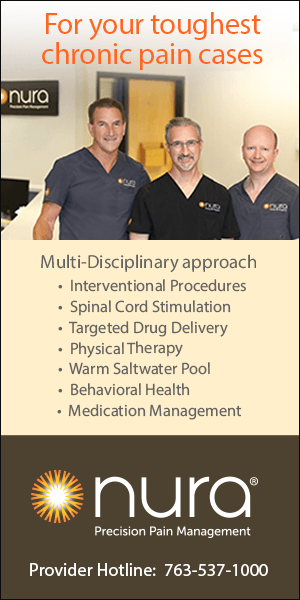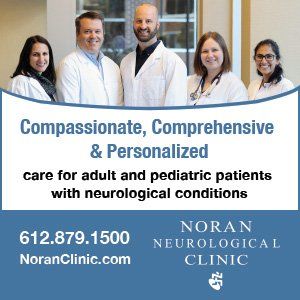regon’s 1997 Death with Dignity Act was the nation’s first law to allow mentally capable, terminally ill adults with six months or less to live the option to request, obtain and self-ingest medication to die peacefully in their sleep. Since then, nine states (Washington, Montana, Vermont, California, Colorado, Hawaii, New Jersey, Maine, New Mexico) and the District of Columbia have authorized medical aid in dying.
Health Care Policy
Medical Aid in Dying
Examining the facts
BY Rebecca Thoman, MD
In my role as Doctors for Dignity program manager at Compassion & Choices, I speak with physicians from across the country, many in authorizing states, who have written prescriptions for terminally ill patients and others who are just beginning to incorporate medical aid in dying into their practices. I also hear questions and concerns raised by colleagues who live in states where medical aid-in-dying legislation is being considered. Here are a few of the common themes that have emerged.
Safeguards ensure proper application of medical aid in dying
Although specific state laws vary, Oregon’s Death with Dignity Act and every U.S. medical aid-in-dying statute requires that in order to qualify two clinicians must evaluate and agree that the requesting patient has a terminal illness with a prognosis of six months or less and is capable of making medical decisions, understanding the consequences of those decisions, and providing informed consent. Both clinicians are obliged to ensure that patients are fully informed of all the alternative options, including hospice care and pain control, and that patients are acting on their own volition, free from coercion. If either provider questions the patient’s decision-making capacity, a mental health consultant is called upon to make the final determination.
This year, the Minnesota End-of-Life Option Act, first introduced in 2015, will contain several changes in response to feedback from stakeholders. The core criteria remain the same, but the bill now specifically states that “no individual qualifies solely based on advanced age or disability” and emphasizes that both oral and written requests may be made only by the individual who will ingest the medication. No substitute — guardian, conservator, health care agent, or other surrogate or proxy — may make a request on behalf of another. An individual who is neither related to, nor subject to inheritance from, nor affiliated with a health care institution providing care to the patient must witness and sign the request form.
Guidelines and clinical standards of care for medical aid in dying have emerged.
Another crucial requirement — that patients self-administer the medication — is underscored by prohibitions against injection or infusion. Swallowing is the most common route of administration, but GI tubes and rectal catheters are acceptable so long as the patient performs the “affirmative, conscious, voluntary act” of enteral administration.
Life insurance and annuity plans are protected and no health insurance company may condition health care benefits upon the availability of medical aid in dying. Because medical aid in dying may not be legally construed as “assisted suicide” or “euthanasia” death records reflect the underlying disease as the cause of death, which protects against unnecessary investigations or autopsies.
Providers have no obligation to participate, and both clinicians who participate as well as those who choose not to participate are protected against retribution and criminal liability. Although health care institutions may decline to allow their employees to participate, they may not engage in deceptive practices or prevent clinicians from providing patients with accurate information.
Fears of abuse are unsubstantiated
Annual reports, collected and made publicly available by state health departments, indicate that patients who request medical aid in dying are suffering from advanced disease with a predictable trajectory, the most common diagnoses being cancer and ALS. Most patients are enrolled in hospice care at the time of the request, which ensures another layer of ongoing protection against abuse because the patient is surrounded by an interdisciplinary team of clinical professionals focused on supporting the patient and providing goals-concordant care.
Opponents often express concerns that legalizing medical aid in dying could lead to misuse by physicians, families or insurers. They cite fears that underserved communities or people living with disabilities could be pressured to forgo care or could be denied care if medical aid in dying were an option.
There is no need to speculate, however, because more than 65 years of cumulative data and experience from authorizing states belie these concerns. No physician has been disciplined and not a single instance of abuse or coercion has been substantiated. In fact, Disability Rights Oregon, the nonprofit whose mission is to protect the rights of people living with disabilities, has not had a single complaint of abuse of the state’s Death with Dignity Act since its inception more than twenty years ago.
Regardless of whether a state has authorized medical aid in dying, insurance providers cover treatments that are deemed effective and proven, and not those considered unnecessary or experimental. A research article published in the New England Journal of Medicine concluded that insurers have no financial incentive to pressure patients to accelerate their deaths.
Additionally, because Medicare, Medicaid, the VA and government employee health insurance cannot cover medical aid in dying, access is limited to those with private insurance or personal resources.
Pain is not the main concern
Requests for medical aid in dying do not necessarily reflect a failure of palliative medicine. The reasons most patients most often give for choosing medical aid in dying are related to a desire for control, loss of quality of life, preserving autonomy and avoiding unnecessary suffering. Physical pain is cited as a reason for choosing medical aid in dying among 25% of patients, whereas only 5% indicate that their decision was influenced by financial concerns.
Suffering can take many forms and personal values play an important role. According to ethicist Dr. Eric Cassell, although physicians agree that relief of suffering is central to our role, diagnosing suffering requires an understanding of the person, not just the disease. Suffering is not a mental affliction, but a complex interplay of disease symptoms with values, personality and spiritual meaning. According to Cicely Saunders, founder of the modern hospice movement, total pain is the suffering that encompasses all of a person’s physical, psychological, social, spiritual and practical struggles.
Not a single instance of abuse or coercion has been substantiated.
For the vast majority of dying patients, hospice provides much needed support and relief from pain. But for some, prolonging the suffering that accompanies an inevitable death inflicts further suffering. Just knowing that medical aid in dying is an option can reduce fear and anxiety and improve quality of life for many terminally ill patients.
Language matters
The medical community is grappling with terminology, and a debate over whether medical aid in dying should be considered “assisted suicide” continues. A growing number of authoritative clinical sources have discontinued use of the term “physician-assisted suicide” in favor of language that distinguishes a request by a terminally ill patient to hasten an inevitable death from the suicidal ideation that results from cognitive impairment. The process, the patient characteristics, the circumstances and the impact on families vary greatly between an individual who dies by suicide and one who employs medical aid in dying in response to terminal suffering.
The American Academy of Hospice and Palliative Medicine uses the term “Physician-Assisted Dying,” and the American Academy of Neurology coined the term “Lawful Physician-Hastened Death.” The American Academy of Family Physicians no longer uses “assisted suicide” when referring to the legal process of medical aid in dying.
The lens through which we view requests for medical aid in dying can impact the care that patients receive and has implications for suicide-prevention strategies. Interpreting a request for medical aid in dying as “suicide” can trigger an inappropriate response and miss the opportunity to explore the deeper meaning behind the request.
Legally, in all jurisdictions where medical aid in dying is authorized, statutes emphasize: “Actions taken in accordance with [the Act] shall not, for any purpose, constitute suicide, assisted suicide, mercy killing or homicide, under the law.” Assisting a suicide outside the boundaries of the law remains illegal.
Standard of Care
Over the past decade, guidelines and clinical standards of care for medical aid in dying have emerged. Clinical Criteria for Physician Aid in Dying was first published in the Journal of Palliative Medicine in 2016. Since then, medical aid-in-dying research has grown and the evidence-based clinical reference, UpToDate, has published Medical aid in dying: Clinical considerations and Medical aid in dying: Ethical and legal issues. Both the American Academy of Family Physicians and the American Academy of Hospice and Palliative Medicine host interest groups where members who practice medical aid in dying can share best practices, discuss challenging cases and receive information and support. State medical societies also host CME training on medical aid in dying.
Support is Strong
According to a 2022 Medscape poll, a majority of physicians agree that physician-assisted dying should be available for terminally ill patients (52%), and another 20% agree it should be available in some circumstances. Only 27% believe it is never acceptable. State-wide surveys of physicians have mirrored these national trends with majority support among physicians from Massachusetts (60%), Colorado (56%), New York (67%) and Illinois (65%).
More than a dozen state medical societies have endorsed or adopted neutral stances regarding medical aid in dying. The Minnesota Medical Association created a Physician Aid-in-Dying Task Force in 2016, which resulted in a final position of conditional neutrality, and was reaffirmed in 2022. As long as adequate safety parameters are met, the MMA will not oppose medical aid-in-dying legislation.
Even the American Medical Association, in 2019, confirmed that physicians may practice medical aid in dying without violating their ethical obligations.
Bodily Autonomy is a Legislative Priority
The movement to authorize medical aid in dying is nonpartisan and grounded in the principles of bodily autonomy and freedom from government intrusion into private health care decisions. Last year, Gov. Walz and the Minnesota legislature codified bodily autonomy rights for reproductive and gender-affirming health care decisions.
Upon winning the majority in the Minnesota House of Representatives in 2022, Speaker Melissa Hortman made this comment in her victory speech: “And, by the way: [Minnesotans] want a government that respects their personal freedoms and their bodily autonomy.” Terminally ill Minnesotans should not have to wait any longer. End-of-life autonomy should be state lawmakers’ and the governor’s top priority in 2024.
Rebecca Thoman, MD, is the Doctors for Dignity program manager at Compassion & Choices.
MORE STORIES IN THIS ISSUE
cover story one
Serious Illness Communication: Building a statewide standard of care
By Lori Brostrom, MBA
cover story two
Radon and Lung Cancer in Minnesota: A bigger problem than you think




















